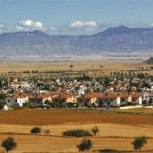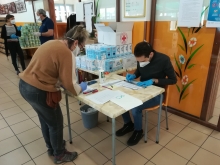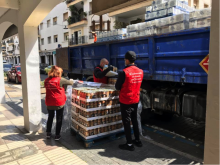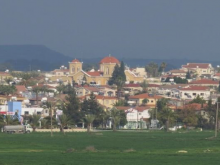
Athienou
The remains of occupation in the area of Athienou, date back to the 14th c. B.C. and the numerous archaeological sites encountered in the zone include the ancient city of Golgoi and the rural sanctuary of Malloura. The modern toponym of Athienou has been known at least since the early Frankish period, even though the exact origin of the city and its name are not clear.
Athienous’ geographical location, situated in an equidistant line of communication and travel between Nicosia, the country’s capital, and Larnaca, played a key role for the economic occupations of the inhabitants. During the Ottoman period, they were renowned conductors, carrying travellers from Nicosia to Larnaca, Famagusta and elsewhere. This profession declined at the beginning of the 20th c. and the inhabitants of the city focused on agricultural, livestock, handicrafts and trade activities.
Since 1974, due to the occupation by the Turkish troops of the land on three sides of the city, Athienou has found itself isolated and has lost a lot of its arable land. The isolation of the city impeded its development but, the inhabitants of the city managed, thanks to their hard work and creativity, to keep the city alive and to thrive again. This tough moment for Athienou encouraged volunteerism and a better organization of its activities. The work of the Municipal Council of Volunteerism – founded in 1970 – became crucial for the local society. This is why, Athienou seeks to spread and improve this Good Practice through leading the URBACT Transfer network “Volunteering Cities”.
Today, agricultural and livestock activities are still some of the main occupations of the inhabitants but, the city also possesses an industrial zone and many other enterprises and services. The city is also well-known for elements of its intangible cultural heritage, such as the local embroidery needle lace and the bread-making tradition. In addition, all local producers can promote their work during the Pancyprian Festival of Athienou Products that takes place every first Sunday of October every year.
In the past few years, the cultural activities taking place in the city have flourished. There are several cultural and sports’ clubs. Speeches and debates on different subjects, exhibitions and various cultural events are also organised several times throughout the year and the Municipal Museum welcomes many schools for educational programs. The youth of the city are also very active in the local life.
The participation of the city in European projects promoting the interaction between European cities, is the next step for the development of the city and the improvement of the local life. It allows to the inhabitants to see a more positive future and find new opportunities in their city, surpassing the difficulties caused by the political situation.
SOME RELATED NETWORKS
Volunteering Cities +
Volunteer Cities
Article
Covid-19: a springboard for more food solidarity?
Article
How are URBACT cities reacting to Covid-19?
Article
'Volunteering Cities' a Powerful Model for European Cities
News






